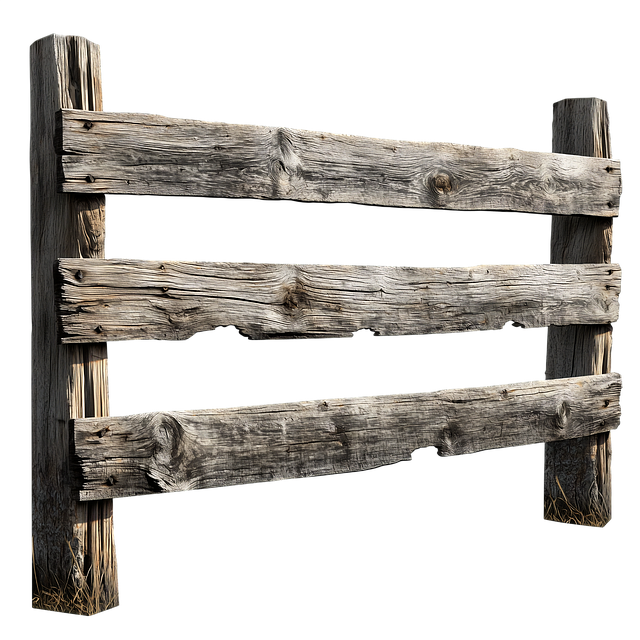Introduction
Maintaining an appealing and durable wooden fence is easier than you think. This comprehensive guide delves into the art of fence staining and sealing, essential practices for prolonging your fence’s lifespan and enhancing its aesthetic appeal. From understanding when and why to stain to choosing the perfect formula based on wood type and desired finish, we’ve got you covered. Learn the preparation secrets that transform a lackluster fence into a standout feature, then master the step-by-step process of professional staining. Discover the critical role sealing plays in protection, and keep your fence looking new with simple maintenance tips.
- Understanding Fence Staining: Why and When to Stain
- Choosing the Right Stain: Types and Benefits
- Preparation is Key: Getting Your Fence Ready for Staining
- Step-by-Step Guide to Professional Fence Staining
- The Role of Sealing: Protecting Your Stained Fence
- Maintenance Tips: Keeping Your Fence Looking New
Understanding Fence Staining: Why and When to Stain
Fence staining is an essential process in maintaining and enhancing the appearance of wooden fences. It involves applying a colored sealer or stain to protect and beautify the fence’s surface. Understanding when and why to stain is crucial for any homeowner looking to preserve their outdoor space.
Wooden fences, over time, are susceptible to weather damage, with elements like sun exposure, rain, snow, and wind contributing to fading, cracking, and rot. Staining acts as a protective barrier by sealing the wood’s pores, preventing moisture absorption, and blocking UV rays that cause fading. It not only adds a desired aesthetic but also prolongs the fence’s lifespan. Typically, early spring or late fall are ideal times to stain, when temperatures are moderate and there’s minimal risk of extreme weather conditions that could affect application or cure time.
Choosing the Right Stain: Types and Benefits
When it comes to enhancing your wooden fence, selecting the perfect stain is a crucial first step. The market offers a wide array of options, each with unique properties and advantages. Water-based stains are popular for their low odor and ease of cleanup, making them a friendly choice for both environment and users. These stains also penetrate the wood, protecting it from within and enhancing its natural grain. On the other hand, oil-based stains provide deeper, more dramatic colors and a high level of durability, ideal for areas with heavy foot traffic or exposure to harsh weather conditions.
Consider your fence’s specific needs and aesthetics when choosing. For a subtle, natural look that highlights wood tones, water-based stains are an excellent pick. If you desire bolder, more vibrant colors and superior protection, oil-based options will better serve your purpose. Additionally, some stains come with built-in UV protection, ensuring your fence stays vibrant and intact against the sun’s damaging rays.
Preparation is Key: Getting Your Fence Ready for Staining
Preparation is half the battle when it comes to fence staining and sealing. Before applying any stain or sealer, thoroughly clean your wooden fence to remove dirt, grime, and mildew. This process ensures that the surface is free from contaminants, allowing for better adhesion of the finish. Start by pressure washing the fence to blast away loose debris and then use a brush with mild soap and water to clean any stubborn spots.
Once cleaned, inspect the wood for any damaged or rotting sections. Repair or replace these areas to ensure longevity of the stain and prevent further deterioration. Sanding the fence gently can also help create a smooth surface, improving the overall appearance and finish of the staining process.
Step-by-Step Guide to Professional Fence Staining
Step-by-Step Guide to Professional Fence Staining
1. Preparation: Before beginning, ensure your fence is clean and free from debris, rust, or old paint. Power wash if necessary, then allow it to dry completely. Check for any damaged sections and repair as required. This step is crucial for achieving a long-lasting stain. Next, tape off areas you don’t want stained, like lampposts or windowsills, using painter’s tape. Apply a layer of primer specifically designed for exterior wood to enhance adhesion and block out existing colors. Let it dry according to the manufacturer’s instructions.
2. Staining: Choose your preferred fence stain—oil-based or water-based—and test it on a small, hidden section first to ensure the desired color and finish. Mix the stain thoroughly following the product’s directions. Using a high-quality brush or roller, apply the stain in even, overlapping strokes. Work in sections, allowing each coat to dry as per the manufacturer’s guidelines before applying the next. Ensure even coverage for a professional look.
The Role of Sealing: Protecting Your Stained Fence
After staining your wooden fence, sealing plays a pivotal role in preserving its beauty and longevity. The protective layer that sealing provides acts as a barrier against damaging elements like UV rays from the sun, harsh weather conditions, and moisture. Without proper sealing, even the most vibrant stain can fade quickly, leaving your fence looking dull and worn out. A quality sealer not only shields the stain but also helps to prevent rot, mold, and insect damage, ensuring your fence remains a stunning feature of your outdoor space for years to come.
Maintenance Tips: Keeping Your Fence Looking New
Regular maintenance is key to keeping your wooden fence looking new and vibrant for years to come. Start by cleaning the fence at least once a year, removing any dirt, debris, or mold growth using a pressure washer or mild detergent and a brush. This step ensures that stains adhere better and prevents premature fading.
After cleaning, inspect the fence for any damaged or loose boards, nails, or hinges. Repair these issues promptly to maintain structural integrity and prevent further deterioration. Lastly, reapply a fresh coat of stain or sealant every 2-3 years, depending on exposure to elements like sun, rain, and wind. This routine care will not only enhance the aesthetic appeal but also prolong the life of your wooden fence.
